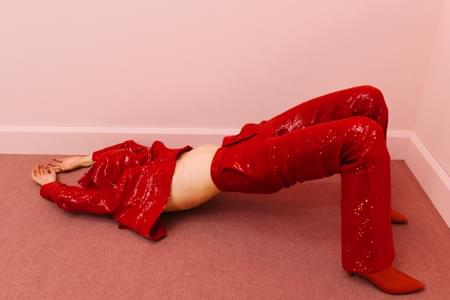This website will offer limited functionality in this browser. We only support the recent versions of major browsers like Chrome, Firefox, Safari, and Edge.

What are the symptoms of Endometriosis?
Endometriosis is a sneaky problem. It can masquerade as all sorts of other health issues. It can also be completely silent (which seems super crazy after you read the rest of this blog)! The most common symptom of endometriosis is painful, crampy, heavy periods often starting in the late teens or early 20’s. Some women have other symptoms such as pain with deep penetrative sex, unusual fatigue or infertility problems. Other women have awful bloating, commonly referred to as “endo belly” where they may look pregnant during their periods. Diarrhea or rectal bleeding can happen, as well as urinary symptoms like feeling the need to pee all the time. You can see why it’s a little hard to pin down what’s wrong sometimes.
So, what is Endometriosis exactly?
Endometriosis is when endometrial cells gets up into your abdomen, attach to a surface and start growing there. Science is not sure exactly how this happens, but there are a few theories. The most popular theory is that during your period, the lining goes both out your vagina AND up through your tubes into the pelvic cavity. Once it gets out of your tubes, it can attach to anything in your pelvis. The most popular spots for endometriosis to grow are your ovaries, the outsides of your tubes, the outside of your uterus, your large bowel, and on the bladder. It also really likes to live in a place called the cul-de-sac, which is a little gap behind the back of the uterus, right at the top of your vagina.
How does a period work?
The period bleeding is both blood and tissue coming from up inside the uterus. This lining, called the endometrium, is what you shed every month during your period. This lining is sensitive to the ups and downs of your hormones and grows or sheds based on what the ovaries tell it to do. When you’ve just finished your period, the ovaries tell the lining in the uterus to start growing. The lining grows until it gets the signal to stop and wait for a baby to be implanted. If that doesn’t happen, the hormones eventually drop off and the lining sheds with the next period.
Ok, that’s cool, but why is it important?
When your ovaries are telling the lining in your uterus to grow, the squatting endometriosis cells in the pelvic cavity grow too! They grab themselves a blood supply, a nerve supply, and set up home. Then when the uterus lining starts to shed, the endometriosis in the pelvis bleeds too…right into your abdomen. That HURTS! It can feel like having appendicitis every month. Yikes!
How does this affect sex?
Pain with sex related to endometriosis is most often caused by the cells that set up in the cul-de-sac near the top of your vagina. This makes the top of the vagina super sensitive when touched or moved, causing pain with deep penetration. There are some studies that show ANY type of endometriosis can cause pain with sex, though. I find that my patients with endometriosis on their bladder have a lot of sex pain too.
Endometriosis also creates enough pain to cause the pelvic muscles to clench. It is a normal response to clench with pain (like grabbing your thumb when you hit it with a hammer). When you clench, it can cause new aches and pains in the muscles which can hurt almost anywhere in your lower abdomen, your lower back, or even your thighs! When you are clenching, that can also make sex hurt, kind of like pushing on a knot in the muscle.
How do I know if I have endometriosis?
The “gold-standard” of diagnosis for endometriosis is to look in your belly with a camera and get a biopsy of a suspicious area. Obviously, that requires surgery. A lot of times gynecologists evaluate all your symptoms and make an educated guess, treating it without definitive proof. Ultrasound may be performed, but often comes back deceptively normal. The best way to get a diagnosis is to see a gynecologist and let them know you’re concerned for endometriosis.
How is endometriosis treated?
There is a lot of discussion among the specialists about how to treat endometriosis. This is partially because it often involves the bladder and bowel, so it's not always as easy as "cut it out". Things that can be done to treat endometriosis include, but are not limited to:
- Hormonal manipulation with birth control
- Leuprolide- an injectable med that makes your body think you're menopausal (imagine the side effects...)
- Orilissa- an oral medication for endometriosis and fibroids
- Laparoscopic removal of visible implants and scarring
- Hysterectomy, with or without removal of ovaries (this is a bit controversial)
In Summary…
Endometriosis is basically pelvic squatters that are supposed to be living in your uterus but are in the pelvis instead. The implants bleed with your periods and can cause significant pain. It can also make sex hurt and your pelvic muscles tight. How to treat this is something you will want to talk to your GYNO about. Additionally, pelvic floor physical therapy can help relieve some of the symptoms and side effects of endometriosis. There are many options and it’s not a one-size-fits all approach!
Learn more about endometriosis and sexual pain in your personalized Wellness Plan. Learn more and start your journey to sexual wellness in the Rosy App today!
Latest On XOXO Blog

Foods That Love Your Heart Back: A Dietary Guide to Cardiovascular Wellness
What you eat every day has the power to strengthen your heart—or strain it. Here’s how to make every bite count.

Stress vs. Burnout: How to Spot the Difference and Recover
Feeling constantly exhausted, unmotivated, and overwhelmed? You might be dealing with more than just stress—burnout could be the culprit.


